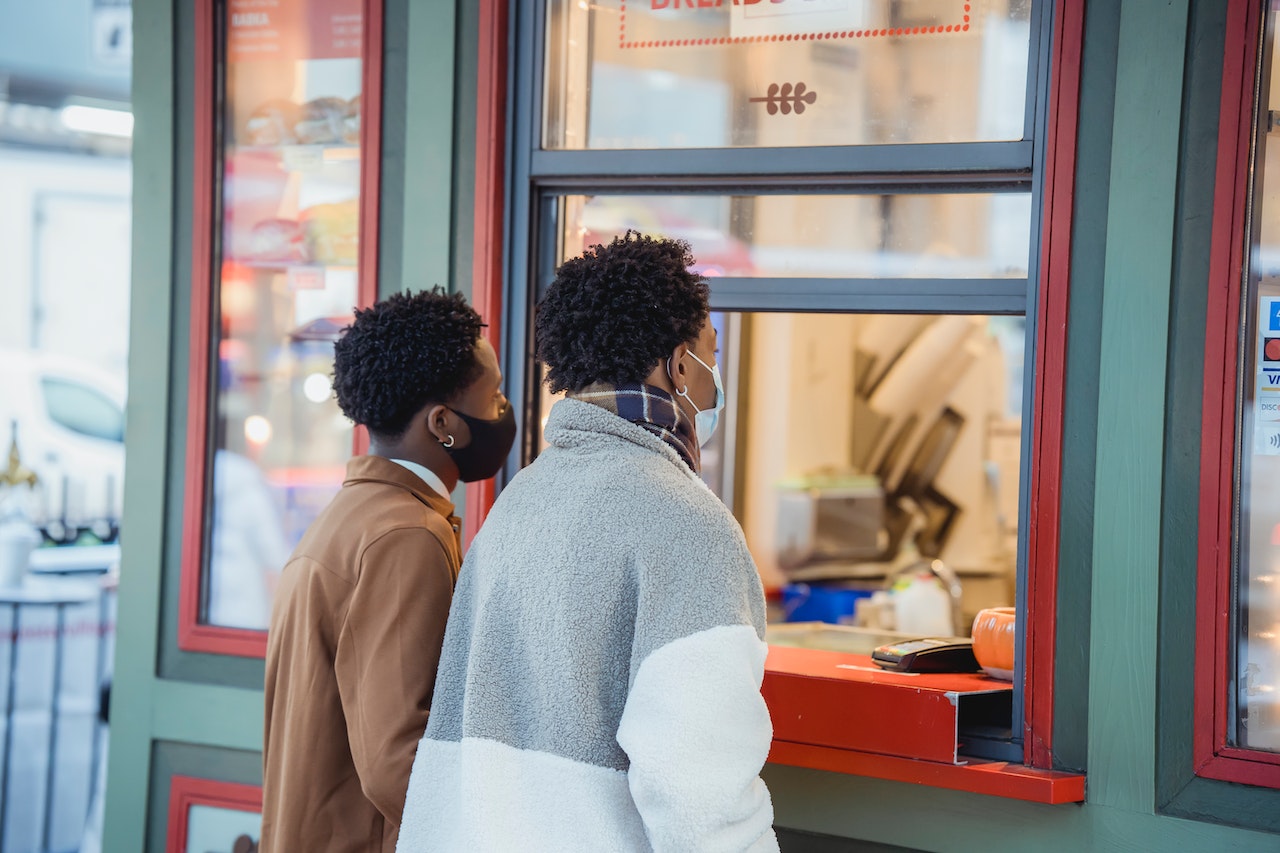Discovering the most effective customer acquisition strategies is crucial for any startup’s success. We’ve gathered insights from 20 industry leaders, including CEOs, founders, and marketing professionals, who share their winning strategies, from tapping into professional networks to committing to excellence and providing social proof.
Learn from their experiences and apply these proven methods to attract and convert new customers for your startup.
Tap into Professional Networks
Professional networks can drive an effective customer acquisition strategy if approached in the right way. Armed with a robust network, any effective leader can tap into their goldmine of connections to attract and convert new customers.
In one remarkable instance, I was able to leverage my network to connect with a key decision-maker at a high-profile company. Through a trusted referral, I secured a meeting and showcased the value our solution could bring to their organization. The result was a resounding success. Not only did we acquire a new customer, but that partnership also opened doors to a whole network of potential customers.
Professional networks are a goldmine because they offer instant credibility, trust, and access to untapped markets. When you tap into your network, you tap into a community of like-minded professionals who can vouch for your expertise. It’s like having an army of brand ambassadors championing your cause.
Matt Hunckler, CEO, Powderkeg
Combine Facebook Ads and CAC Tracking
Our startup has been really successful using Facebook Ads to acquire new customers. The platform’s targeting options are really advanced, and it’s great for reaching a wide range of customers, especially in the business-to-consumer (B2C) market. To make the most of it, we carefully defined our target audience based on their characteristics and interests.
While we were successful in using social media as a tool in customer acquisition, it’s important to remember that how well your online ads work depends on different things like what industry you’re in, who your target audience is, and how good your ads and website look.
We also pay close attention to our Cost of Customer Acquisition (CAC) because it helps us see how well we’re doing at getting new customers. It’s a key metric we religiously track to measure the overall success of our efforts to attract and gain customers.
Paw Vej, Chief Operating Officer, Financer.com
Leverage LinkedIn and Referrals
I’ve used a variety of strategies to get more customers, but the ones that have worked best are using social media—especially LinkedIn—and referral marketing.
Here’s my approach: I use my current contacts on LinkedIn to reach out to new customers and offer solutions to their problems. By establishing trust and credibility, I become the go-to source for their needs. And I don’t stop there–I also target ads to specific audiences who share similar interests with my current customers.
But the real secret to my success? Word of mouth! When I deliver exceptional service to my clients, they’re more likely to recommend me to their friends and colleagues. So, I make sure to provide each and every customer with a positive experience they won’t forget.
With social media and referral marketing on your side, it’s easier than ever to reach new audiences and turn them into satisfied customers. So, give it a go!
Maria Harutyunyan, Co-founder, Loopex Digital
Register for Small Business Digital Ready to discover and access free small business-focused events.
Build Brand Partnerships and Integrations
As a SaaS solution, one of the most effective acquisition strategies we’ve used is building brand partnerships. By customizing integrations with other powerful platforms in our industry, we make our products more accessible to those already using our partners’ solutions.
We can effectively cross-market our tools while making our products even stronger with each integration. Since many of our target markets overlap, we gain access to a fresh customer base that’s likely already interested in our products.
Denise Hemke, Chief Product Officer, Checkr
Use YouTube for Testimonials and Guides
Our platform was built to help delivery drivers plan better routes, so we’ve built out our YouTube channel with video testimonials and guides to address their major pain points. As we’ve built a strong presence and expanded our library, it’s become a great customer resource that also funnels new customers our way.
YouTube is a fantastic platform that can reach 2.1 billion active monthly users, but it also doubles as an impressive SEO tool. We use our YouTube videos to help rank on organic searches and draw even more traffic to our app.
Jack Underwood, CEO and Co-founder, Circuit
Create a Resource Guide to Promote Thought Leadership
Our best move to acquire customers was to create a resource guide and support tools to educate consumers on our product. With the help of a rich content catalog and handy calculators that help consumers make more informed choices, we acquire most of our customers through our thought leadership strategies.
Customers come to us to get answers, because they know they can trust us. This trust is built over time with high-quality content and by being attentive to their biggest pain points. Often, those visitors become customers because they see that our product is better. Rather than pushing our product, we can pull customers in by being the best at what we do.
Anthony Martin, Founder and CEO, Choice Mutual
Focus on a Solution-Based Content Strategy
We were able to gain a foothold on our targeted customer base through solution-based content. This we were able to achieve through our varied website information. We included service guides and tutorials as our main tactics. The latter was also personalized to suit the problems of our target audience.
Our regulars gave us more valuable feedback than new customers, which we felt we had to focus more on. But, for a business to grow, we needed a larger audience. This is where we started analyzing online searches and learning more about our audience.
Once we had a framework to follow, our content focused on producing customer-oriented solutions. This helped us gain a new clientele, while also improving and expanding our services.
Marc Hardgrove, CEO, TheHOTH
Attend Conferences and Community Events
At Webserv, our most effective customer acquisition strategy has been a dual approach of attending industry conferences and hosting community events. Particularly within the behavioral health industry, these efforts have proven to be extremely successful.
By participating in industry conferences, we are able to engage directly with key decision-makers, demonstrate our expertise, and create lasting relationships. Concurrently, hosting events such as golf tournaments provides an informal and enjoyable setting for these potential clients.
An example is a recent event where our conference participation coincided with a golf tournament we hosted. This combination facilitated valuable face-to-face interaction with a large number of our target audience’s decision-makers. As a result, we were able to generate significant business leads, all at a fraction of the cost of traditional paid advertising.
Kevin Hall, Marketing Operations, Webserv
Cultivate an Active Referral Network
At our startup, building an active referral network has been a game-changer in attracting new customers. Rather than just advertising, we’ve gone the extra mile to establish trust with our real estate investors, current clients, and industry partners, and incentivize them to refer potential clients our way.
By offering rewards for referrals and highlighting our top-notch services, we’ve attracted lots of word-of-mouth recommendations that have turned into solid new leads.
Loren Howard, Founder, Prime Plus Mortgages: Hard Money Loans
Succeed with Sharing Resources and Outreach
LinkedIn outreach has been a highly effective customer acquisition strategy for our startup. Our approach involved connecting with potential clients and industry professionals, contributing valuable insights in group discussions, and sharing thought-provoking content on our company page.
One successful example involved sharing our SEO framework for getting exceptional results for our clients. These posts resonated with our target audience, leading to an increased number of inquiries.
By engaging with these prospects directly through LinkedIn messages, we nurtured relationships and converted several leads into clients, thereby validating LinkedIn outreach as a powerful acquisition tool.
Jaya Iyer, Marketing Assistant, Teranga Digital Marketing
Identify Keywords and Connect with Search Intent
Everybody is trying to find the latest gimmick or shortcut to acquire customers. But the simplest and most battle-tested way is just using keyword research to identify low-competition keywords and writing articles that satisfy the searcher’s intent.
Here’s my example.
I run a blog dedicated to helping others build their creator business like a startup and wrote a post 3 months back about AI content.
I identified the keyword on SEMRush with a keyword difficulty score of 7 and a search volume of about 200. I also noticed that there were other low-domain authority sites that were ranking on the first page of Google that weren’t great at all. Their content was thin, not optimized for on-page SEO, and clearly AI-generated.
I took the opportunity to craft a better article and since then, that single post has generated over 330,000 impressions and 7,000 clicks which translated to about $1,000 in monthly affiliate earnings—just this single article.
Brendan Aw, Founder and Editor-in-Chief, brendanaw.com
Utilize Positive Customer Reviews
The opinions and reviews of other customers are more credible than Google ads or even organic search results for prospective customers. Make sure you’re using positive product or service reviews on your website, social media, and other effective avenues for attracting new customers.
It can be a fantastic idea to ask returning customers for reviews and feedback in order to collect more favorable testimonials. A man in need of a plumber is an example of a successful testimonial customer acquisition strategy. He might be hesitant to use a plumbing service based solely on its website or other marketing materials. He is comforted by reading a positive review from a nearby house and chooses to contact the plumbing business.
Matthew Appleton, E-commerce Manager, Appleton Sweets
Invest in Search Engine Optimization
Search engine optimization remains the most significant contributor to customer acquisition for BIG Safety. We’ve invested heavily in SEO over the years, and it’s been a successful strategy for us.
Since organic traffic is key, we focus on improving our ranking within major search engines like Google and Bing. This includes regularly updating our website with fresh content, optimizing titles and meta descriptions for better visibility, and investing in link-building strategies to increase our presence on the web.
We’ve also implemented structured data markup to make our website easier for search bots to crawl and index, which impacted our rankings positively. These techniques have helped to drive more organic traffic to our website and have been a major source of customer conversion for us.
Todd Saunders, General Manager, BIG Safety
Embrace Influencer Marketing
Influencer marketing combines the reliability and sincerity of a client endorsement with the accomplishments of viral social marketing. Even the most popular corporate social media pages rarely have anywhere close to the number of followers that popular influencers do, and they almost never enjoy the same level of social influence.
For higher conversion rates, collaborating with a well-known influencer who connects with your target audience is a great customer acquisition technique. A typical illustration of influencer marketing client acquisition is a prospective client who follows a certain Instagram influencer.
The potential consumer decides to buy the vitamin supplement after watching a video in which the influencer uses and recommends a new brand of vitamin. This indicates that the conversion to a customer was successful.
Alice Hall, Co-founder and Creative Director, Rowen Homes
Implement Paid Advertising
Our startup implemented a paid advertising strategy on LinkedIn, which yielded exceptional results in terms of customer acquisition since it allowed us to directly reach the right decision-makers and professionals within our target industries.
We leveraged various ad types on LinkedIn, including sponsored content, message ads, and text and dynamic ads. This approach ensured that we could reach and engage our audience in different ways. As a result, we generated continuous leads by carefully crafting our ad campaigns and optimizing them based on audience response.
Once we attracted leads through our LinkedIn ads, we focused on converting them with custom offers tailored to their specific needs. By understanding their pain points and demonstrating how our solution could address them effectively, we successfully converted a significant number of leads into paying customers.
Ajay Prasad, President and CEO, GMR Web Team
Involve an Effective Demo Sales Strategy
As a revenue management and intelligent pricing SaaS, we always found it difficult to acquire customers based on words alone, which is why our go-to customer acquisition model had to revolve around demo sales.
Getting our leads to sign up for a demo meant getting our foot in the door, and that’s all our sales team needed to close the customers. We spent years of time and resources perfecting our demo model and getting leads to sign up for it, and it has been the #1 customer acquisition strategy that always yielded the best results for our startup.
Cath Brands, Chief Marketing Officer, Flintfox
Remember Free Trials Attract New Users
Ling offers new users a free trial when signing up for an annual plan. Because we see high value in our app, we do not offer it outright for free and our free trial gives 100% access to all features and levels. The free trial lasts for seven days and, during that time or at the end, users can cancel their subscription and receive a full refund.
This customer acquisition method has worked really well for us and we always follow up with those who didn’t continue to learn how we could make the app better for others in the future.
Simon Bacher, CEO, Co-founder, Ling App
Exclusive savings on the products that power you
Contribute to Solving Essential Industry Issues
For us as a software firm, open-source projects have been the key.
As a security-focused firm, we contribute to OWASP, which is the Open Web Application Security Project. We contribute voluntarily to the writing of security standards and guidance, such as OWASP SAMM, which stands for Software Assurance Maturity Model.
Large corporations use these standards and guidance in their organizations, and they see us mentioned as authors. This has led to us, even though we are a very small startup, signing deals with several Fortune 500 companies, both for consultancy and tooling.
Thanks to this, we are experiencing spectacular growth without having raised capital. We are a bootstrapped organization. So my message is: play the long game, contribute to solving the essential problems in the industry, for free if need be. Because if you are known as an authority on the major issues in your industry, the customers will come to you.
Dag Flachet, Co-founder and Professor, Codific
Grow an Affiliate Program
Our most effective customer acquisition strategy has been our affiliate program, which was revolutionary for our startup. One day, we noticed an emerging health and wellness blogger with a loyal following had mentioned our services.
This spurred an idea. We reached out, proposing a collaboration through our newly formed affiliate program. She’d earn a commission for every new customer she brought in. This partnership was a boon for both parties. Her audience got exclusive discounts and valuable content, while we secured a wave of new clients, driving a considerable surge in our conversion rates.
This strategy effectively leveraged the power of word-of-mouth and created a win-win situation for all involved. This experience taught us the immense potential of creating symbiotic relationships with influential voices within our target market.
Joe Troyer, CEO and Growth Advisor, Digital Triggers
Commit to Excellence and Provide Social Proof
Since our inception, our unwavering commitment to accuracy has propelled us from a startup to one of the industry’s leading transcription companies. By relying on 100% human transcriptionists in an era dominated by AI, we consistently deliver top-notch quality transcripts to every client.
Our customer acquisition strategy of highlighting our 99% accuracy has yielded remarkable results. Through testimonials and case studies, we provide concrete evidence of the benefits our precise transcriptions bring to satisfied customers. This social proof establishes trust and credibility, leading potential customers to choose our services with confidence.
Given the criticality of accuracy in legal, academic, and research fields, our services have resonated strongly. Not only do satisfied customers continue to entrust us with their transcription needs, but they also actively refer others to our services, solidifying our reputation as a reliable and accurate transcription provider.
Beth Worthy, President, GMR Transcription Services, Inc.





